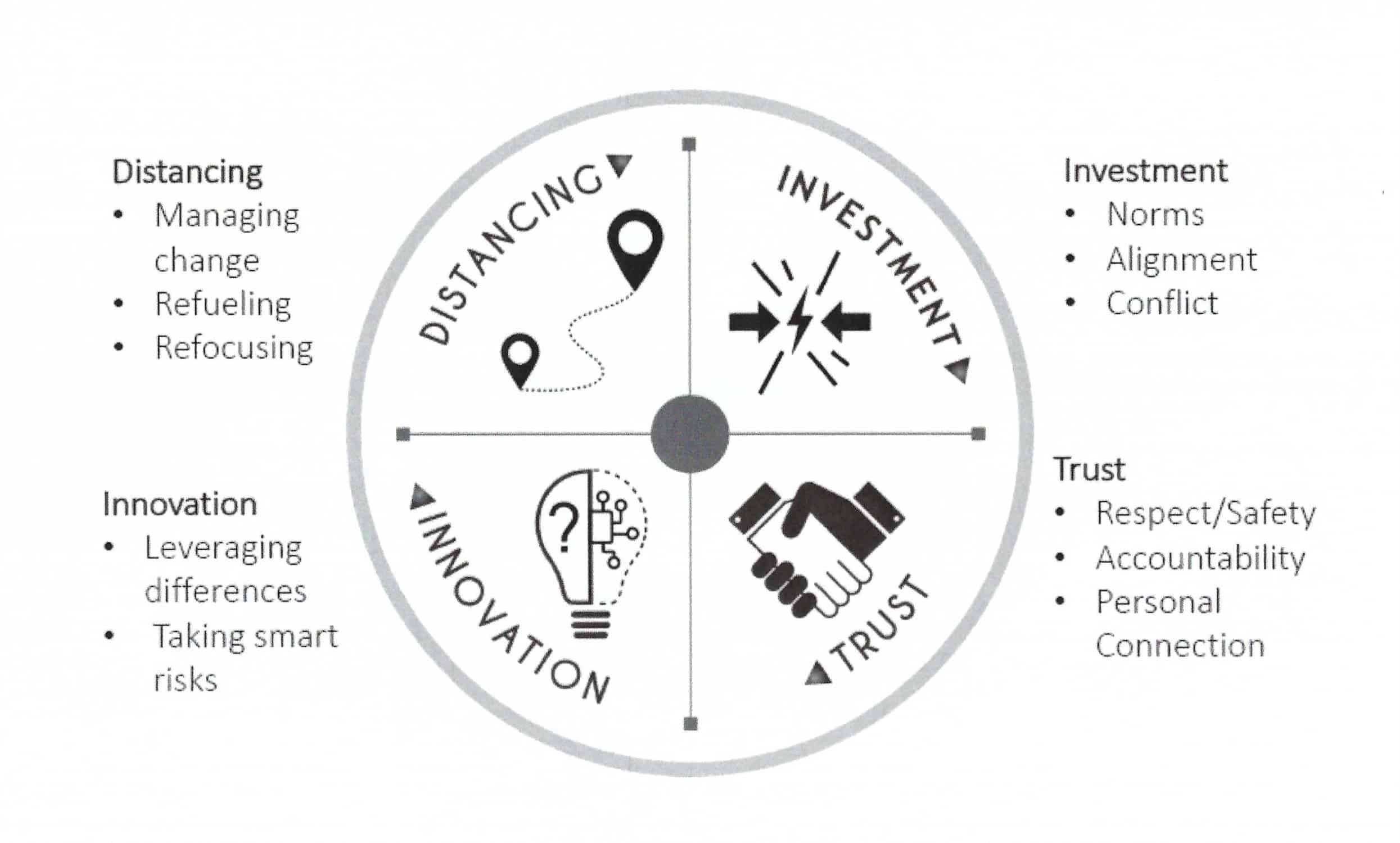Succession effectiveness is driven by many factors. When these factors are managed well, the transition is seamless. When any of them glitches either through omission or commission, the team will struggle. Consider each stage of the team’s cycle and how succession transitions either succeed or fail.
Investment Stage
In this foundational phase, teams must establish norms, clarify alignment with strategic direction and navigate conflict with professionalism. The outgoing leader has anchored these variables into the team culture and, unless the incoming leaders is a clone, there will be some change. Perhaps the new leader is, by nature, more inclusive. Teammates who might have previously hesitated to challenge for fear of repercussion might be invited to contribute new perspectives. A culture that once feared conflict might embrace diversity as fuel for creativity. Whatever the difference in leadership style, the team will need to recalibrate.
Trust Stage
This phase of the team’s lifespan relies on respect, connection and accountability. The manner in which the outgoing leader leaves and the incoming leader is welcomed either strengthens or weakens psychological safety on the team. If the departure or the entrance lacks grace, the energy of the team is spent managing that fallout. Egos are commonly involved in high profile positions. Leaving a legacy or making a splash can polish a reputation as easily as it can cause bruising. The workplace is seeking consistency and stability during change. It is the responsibility of everyone managing the succession process to elevate trust and safety.
Innovation Stage
This phase capitalizes on harnessing diversity and taking smart risks. The International Futures Forum based in Sweden posits a “three horizons” model for guiding innovation during change. Each horizon represents the perspective of either a steward, a visionary or an entrepreneur. Stewards protect the team’s legacy. Visionaries embrace the future. Entrepreneurs build the path from current practice to the future vision. Each teammate embraces one or more of these roles either through personality or job description. In an ideal succession process, all three roles are active and mutually respected in supporting the value of the past, the possibilities of the future and the actions needed to bridge that transition.
Distancing Stage
This phase calls upon the team’s change management skills to step back, gain perspective on what is changing, refuel depleted energy and engage resilience to prepare for the new demands that lie ahead. Every member of the team has a unique relationship with the outgoing and incoming leaders. The magnitude of loss is directly related to the degree of connection. The deeper the attachment, the more painful the loss. More casual connections are less challenging emotionally. Everyone copes with change and loss at their own pace. Whatever the timeline, teammates have to take stock in history, say goodbye to the status quo and anticipate what’s new. Until this process is complete, the team will struggle with the next investment stage.
Teams are constantly evolving. Sometimes, the evolution is incremental and gradual. Other times, it is significant and disruptive. Succession management is almost always significant and disruptive unless leadership stays attentive to the nuances of each stage of the team’s lifespan. Knowing what stage is playing out will guide which actions to take to ensure seamlessness while empowering the continuous improvement that succession planning promises.


